We are going to deal with an extremely difficult subject to talk about and that is not much talked about in the chess literature: Intuition, which can also be called instinct. It is not an easy term to define, not even with the help of a dictionary the task easier. Today we are going to try to debate this subject!
What is intuition?
According to Oxford Languages, intuition is “the faculty or act of perceiving, discerning or sensing things, independently of reasoning or analysis.” That is, it is something that is orchestrated by our subconscious, “a feeling” that that decision is correct or incorrect. For example, when we were children and our parents said: “Look both ways before crossing the street.” This becomes a truth in our subconscious, and we end up doing it without having to think.
How does intuition work?
To understand how intuition works in our mind, we need to dig a little deeper. I won’t be able to explain such a complicated topic in a short article, but let’s make a small introduction.
In the Best-Seller “Thinking, Fast and Slow, 2011” by Psychologist Daniel Kahnemann (very renowned for his work in the art of decision-making), he states that the human mind is divided into two decision-making systems: System 1 and System 2.
- System 1 is our automatic mode. It is formed by all the knowledge we acquire during our life. It’s fast and it’s usually our default thinking system, as it doesn’t require any kind of thinking and saves energy. This is where Intuition is present.
- System 2 is where the rational mode comes in. It is the more analytical side, where the thinking process takes longer, expending more energy, but this is where learning takes place and enriches the system 1.
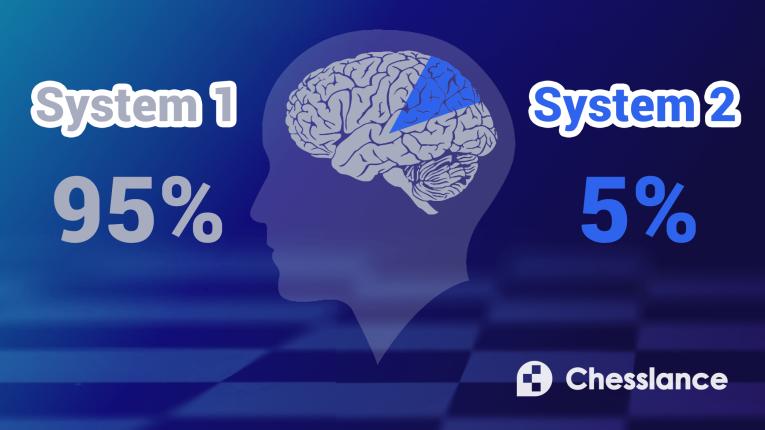
Intuition in Chess
Many times, when we just look at a position on the board, moves randomly come to mind. This is our intuition talking to us, trying to show you the right path, based on your prior knowledge. Probably the clearest example of intuition at work is when you play Bullet: You don’t have time to reflect on your decisions, and your intuition sends you to move after move. It is important to point out that we must do a serious study of the game, and acquire as many general concepts as possible, as this enriches our intuition (as we saw in the section “How does intuition work?”).
A practical example
When we play a game, there is always a problem that we are going to solve: “What am I going to do on my next move?”. For that, we use several analysis tools, depending on what is happening on the board: Positional analysis, we calculate variants, try to evaluate the position correctly, trying to conclude. Unfortunately, this is not always possible, and this is where our intuition comes in. Let’s go to a practical example:
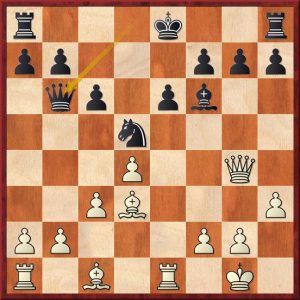
This is a very famous example and illustrates our theme well. Think about it: how would you play the white’s position? There are many ideas, and we will discuss them here.
White has some positional advantages: The Bishop Pair and a solid space advantage. However, Black has a pretty solid position with no apparent weaknesses. But something about Black’s position stands out: the position of the king. With Black’s King in the center, Rxe6+ ideas get a lot of attention. But is it possible to calculate everything correctly? Let’s see: 15.Rxe6+?? fxe6 16.Qxe6+ Kf8 and because the knight can go back to e7, White’s attack doesn’t work. What if we drive the Knight out first?
Tal’s decision
15.c4 Nb4 16.Rxe6+!!?
In his book “The Life and Games of Mikhail Tal”, Mikhail Tal himself says the following: “At this point, the ‘correct’ move would be 15.a3, hoping to exploit the famous pair of bishops in a prolonged struggle. Before the match, we note that the Hungarian Grandmaster has an excellent hunch for the subtlest strategic nuances, but reacts less confidently to sudden tactical changes. That, and also the fact that the black king remained in the center of the board with impunity for 14 moves, provoked the following reaction.”
The sea of variations
16…fxe6 17.Qxe6+ “Here Black is faced with the problem: how to punish the opponent for his recklessness. This is of course less achieved by 17…Kd8 – White can play 18.Qd6+ Qe8 19.Qe6+ etc. Neither during the game nor after it could I find something better for White. My hopes were mainly associated with the ‘refutation‘ 17…Be7, in which, it is true, White loses after 18.Bg5 Qc7 19.Re1 Nxd3! 20.Bxe7 Qd7!“
“White, however, can gain a very attractive position by the intermediate move 18.Bg6+!, and if now 18…hxg6 then 19.Bg5 Qc7 20.Re1 with the threat of 21.Bxg6+!. Black must therefore answer 18…Kd8 19.Bf5 Qxd4 (not 19…Qc7 20.Bf4 Qc8 21.Qe4 ) 20.Bf4. This position appealed to me and a continuation of the variation (not exactly forced, it’s true) revealed a very attractive idea: 20…Ke8 21.Re1 g6? 22.Be3 Qd6 23.Bxa7!! Qxe6 24.Bb6+ Kc8 (or 24…Kd7 25.Bxe6+ Kd6 26.c5 mate) 25.Bxe6+ and 26.Bd7. However, in this variation, Black could also have made a successful defense. – Tal”
However, note the difficulty of calculating these variations – and it’s not like it’s possible to calculate this all at once, without going back and forth through the analyses. This consumes a lot of time and energy, and at the end of the day, the evaluation of the position is not clear. So, as is typical of Tal (not only in this game but there are several other examples of him sacrificing material solely on intuition), he relied on intuition and that the position would be tricky enough for his opponent. And in the end, he was right:
How to train intuition?
Naturally, when you study and practice chess seriously, your intuition will improve along with your understanding. But according to renowned author and chess coach Mark Dvoretsky (1947-2016), the main method for improving your intuition is:
“Separate a sequence of exercises (positional or tactical, not very difficult) that do not require deep calculation and set a time limit (example: 15 minutes for 5 exercises. Calculate the minimum possible to make your decision, trying to “guess” the way correct to play. If you get it wrong, cut a third of the time, until the timer runs out – or you miss them all” – Secrets of Creative Thinking, 2009.
I could end the article here, but why not train YOUR intuition? I separated 5 exercises for you to try using the Dvoretsky method. Grab your timer and let’s train!
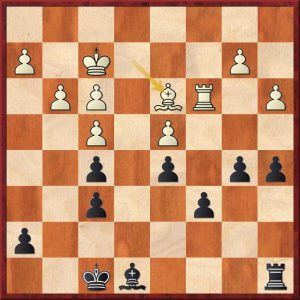
1…Bd7 Defending the f5 pawn and keeping the position solid.
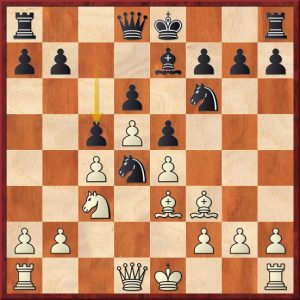
1.dxc6 White has a pair of bishops and naturally tries to open the position. It is also possible to exploit weaknesses in the d-file.
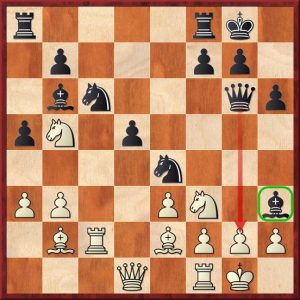
1.Ne1 Defending g2 and keeping the knight safe, unlike if he went to h4.
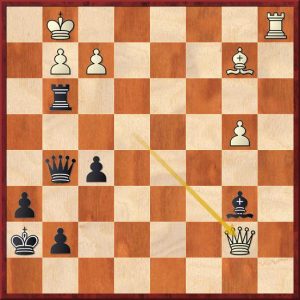
1…Bxf2+! Finishing off the game, as if 2.Kxf2 Qe3+ 3.Kf1 Kg4 With a destructive attack.
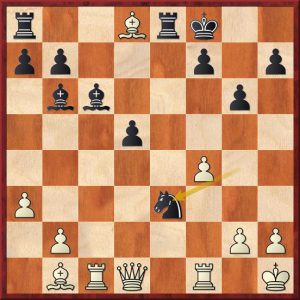
1.Bxb6 The cleanest way to finish off, since after 1…Nxd1 2.Bc5+ and White have one more piece with no counterplay.
I hope you enjoyed my take on this complex topic, and if you want to know more about how to train and improve your intuition, our article on How to Become a Tactical Beast will do just fine!
Links and recommended reading
- Mark Dvoretsky; Arthur Yusupov. Secrets of Creative Thinking: School of Future Champions 5
- Mikhail Tal. Life & Games of Mikhail Tal
- Kahneman, Daniel (2011). Thinking, Fast and Slow